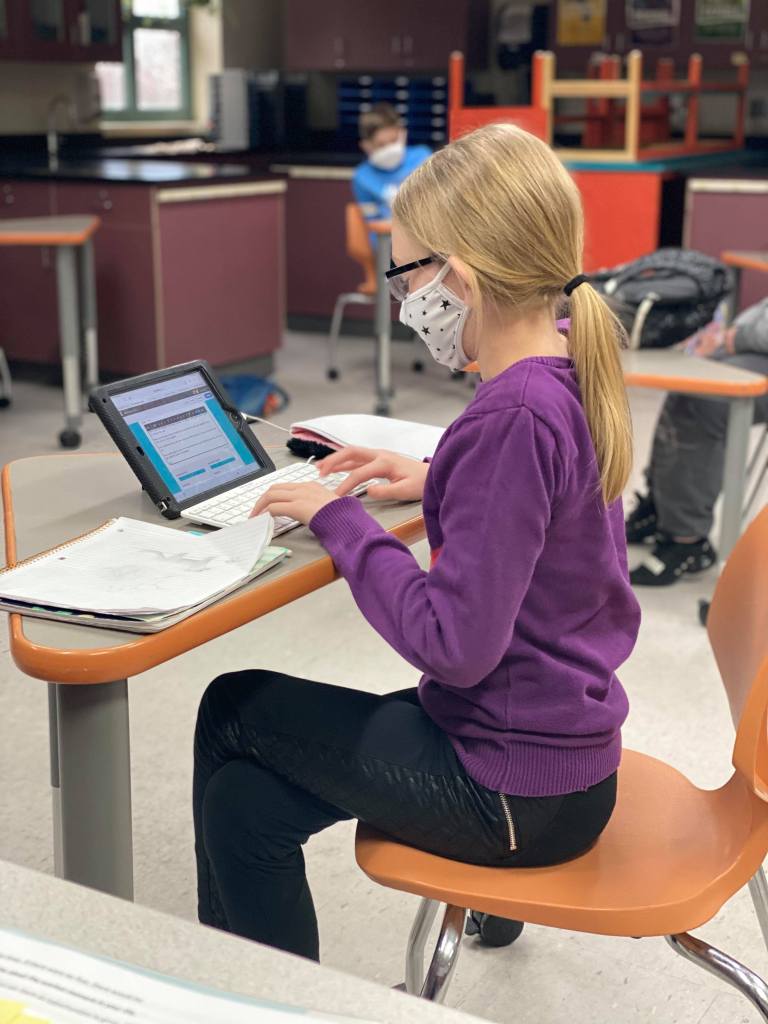Registration time is upon us, which brings the usual questions about how certain things are accomplished in the ARCTIC Zone learning environment. Fifth grade families are preparing for their students to enter middle school next year, and with that comes the decision about registering for the ARCTIC Zone or for the traditional curricular model. Two of the most common questions we receive are, ‘How do you make sure students are learning the same standards as those outside the AZ?’ and ‘What is the transition like for students when it comes time for high school?’ Even after five years of programming, this learning model remains foreign to many adults, so these questions are very expected and appropriate.
Standard Completion
When originally designing the ARCTIC Zone, we spent time dissecting each of the standards a traditional classroom covers throughout 6th-8th grade. We condensed and combined standards in each content area to establish what we call our program’s Power Standards. These standards are used to guide our project work throughout each quarter.
Project-Based Learning (PBL) is a teaching model that engages students in an authentic driving question or challenge for an extended period of time. It is interdisciplinary, and unlike a class project that a traditional class might use at the end of a learning unit, students learn content knowledge and skills through active exploration during the project process. We use three different types of project work to drive learning in the ARCTIC Zone.
Class Projects, like our annual Film Festival, are teacher-guided and offer students opportunities to use voice and choice in their final products. Flex Projects, like this quarter’s game of Clue, are teacher-designed and offer students many opportunities to make personal choices throughout the project process and in their final product. Student Passion Projects are student-driven and -directed. Students use their own passions and interests to design a project of their own, while problem-solving and making decisions for how to progress along the way. During frequent check-ins with an advisor, they explain their choices, reflect, and reevaluate.
One thing to consider is how flexible certain things can be when it comes to content learning. For example, on a traditional science path, a student would cover Earth Science in grade 6, Life Science in grade 7, and Physical Science in grade 8. The concepts in each curricular area are nonlinear and do not require one area to be learned before moving to the next. Because of this, a 6th grade student in the ARCTIC Zone may be conducting a project that connects to Physical Science concepts while an 8th grade student may be covering Earth Science. In this way, when an AZ student covers specific concepts may look different from a non-AZ student, but all will be covered throughout their time in middle school.
Transitioning to High School
We often have parents, guardians, and other adults who worry AZ students might struggle with a transition “back” to a traditional learning environment when moving to high school. When imagining some of the differences the ARCTIC Zone offers compared to a classroom with which most adults are familiar, it can be easy to jump to conclusions about how different the entirety of the classroom experience might be. The teaching and learning process is certainly quite different. I wonder, though, what it is adults are concerned about with the “transition.”
An AZ classroom still has a teacher in the room who offers the expectations and goals for the day, teaching and modeling specific skills as needed, checking in with students as they work. Students are still assessed on their content knowledge and project progress. They still have at-home expectations. Plus, when not in their AZ classes throughout the day, our students are in traditional classrooms with non-AZ students like art, math, computer applications, health, foreign language, etc. I also argue that time in the AZ spent practicing and developing essential life skills like organization, time-management, collaboration, communication, goal-setting, self-reflection, and the ability to ask for help offers students an extensive toolbox with which to enter their high school classes.
We have graduated two classes from the ARCTIC Zone so far, soon to be three. Students have been met with much success at the high school level. I enjoy hearing from former students and families with stories about how they are using their experiences from driving their own projects in the ARCTIC Zone within their current classroom environment.
“Different” can be difficult to accept or trust. It is good to ask questions and to challenge new concepts. It is also good to ask questions about and to challenge the way things are and have always been. “Different” might be just the thing you or your student is craving.












I feel as the AZ has helped me with alot of things like how when there wasnt covid you taught us how to work together even with people we dont like and learn alot of other fun skills that will help me. I really do miss the AZ and you and Mr.Brown you guys always knew how to help me!
LikeLiked by 1 person